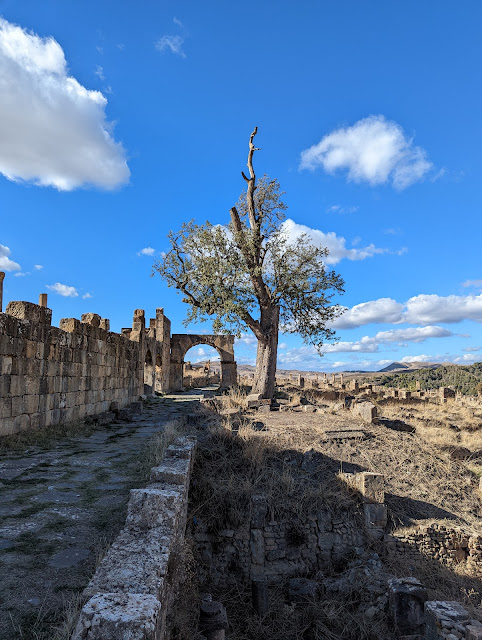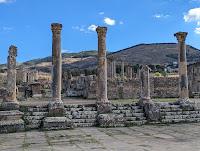Djémila became a UNESCO World Heritage Site for its unique adaptation of Roman architecture to a mountain environment. Significant buildings in ancient Cuicul include a theatre, two fora, temples, basilicas, arches, streets, and houses.
Under the name of Cuicul, the city was built 900 meters (3,000 ft) above sea level during the 1st century AD as a Roman military garrison situated on a narrow triangular plateau in the province of Numidia . The terrain is somewhat rugged, being located at the confluence of two rivers.
The city was initially populated by a colony of Roman soldiers from Italy, and eventually grew to become a large trading market. The resources that contributed to the prosperity of the city were essentially agricultural (cereals, olive trees and farm).
The city was slowly abandoned after the fall of the Roman Empire around the 5th century and 6th century. There were some improvements under Emperor Justinian I , with wall reinforcements.
Muslims later dominated the region, but did not reoccupy the site of Cuicul, which they renamed Djémila ("beautiful" in Arabic). (Wikipedia)
































































No comments:
Post a Comment